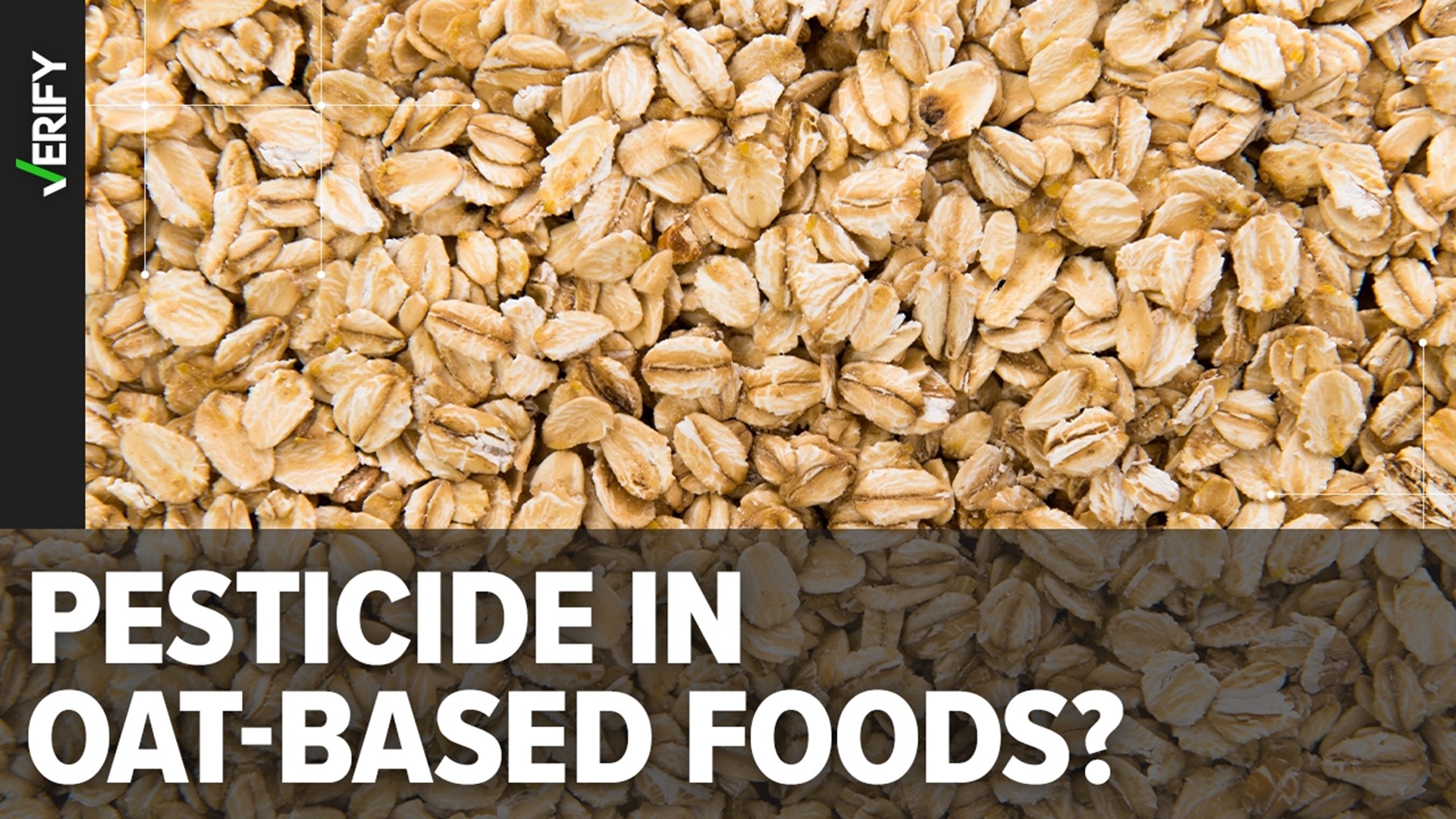In February 2024, media outlets reported on a new study that found a pesticide linked to infertility in animals called chlormequat in American people and oat products.
Multiple VERIFY readers texted us to ask if the headlines are true, and if the pesticide could be found in popular foods like Quaker Oats and Cheerios.
THE QUESTION
Did a study find a pesticide linked to infertility in animals in Cheerios and other oat products?
THE SOURCES
THE ANSWER
Yes, a study did find a pesticide linked to infertility in animals in Cheerios and other oat products. However, the amounts detected were well below the EPA’s limits for how much of the pesticide is safely consumable on oat products.
WHAT WE FOUND
A peer-reviewed study published in the Journal of Exposure Science & Environmental Epidemiology in February found a pesticide called chlormequat present in many U.S. oat products, but at levels far below the limits set by U.S regulators. Past research suggests chlormequat may negatively impact fertility in animals, but those findings are inconsistent and no studies have been conducted on its impact on humans.
The study, conducted by the Environmental Working Group (EWG), a nonprofit advocacy group focused on environmental health and chemicals in household products, used urine samples to identify the presence and concentration of chlormequat within the study’s participants. The researchers also researched the presence and concentration of chlormequat on various oat and wheat products sold in the United States.
Chlormequat is a pesticide sometimes used by oat and wheat farmers to shorten the height of the crop’s stem so it’s less likely to bend and break, thus making it easier to harvest, according to the Environmental Protection Agency (EPA).
Pesticides have to be registered with and approved for use by the EPA before they can legally be used in the United States or be present in American food products. Chlormequat has not yet been approved for use by American farmers, but the EPA does allow traces of it on products imported into the U.S. from other countries.
In 2018, the EPA allowed chlormequat residue to be present on some imported foods within certain limits. Since the European Union, the United Kingdom and Canada already allow the use of chlormequat, this means the pesticide could make its way into some American products, particularly oat and wheat products.
In April 2023, the EPA announced it was considering allowing American farmers to use the pesticide within yet-to-be determined limits. EWG opposes this plan because it says the chemical could cause health problems.
The EWG study found chlormequat in the urine samples of 90% of the study’s 50 human participants in 2023 and was present in 92% of 12 non-organic oat products tested in 2023, including in Quaker Oats and Cheerios. EWG did not list the other brands or products tested.
The study’s authors wrote that the chlormequat concentrations found in the urine samples suggest that the study’s participants were exposed to chlormequat levels “several orders of magnitude” below the EPA’s and the European Food Safety Authority’s acceptable daily intake limits.
Among the 11 oat products with detectable chlormequat studied in May 2023, the median or middlemost concentration of chlormequat was 114 parts per billion, according to the study. In 2020, the EPA set the limit for chlormequat residue on oats at 40,000 parts per billion.
That means the median chlormequat concentration found on the products was about 350 times less than the EPA limit. For comparison, Canada also has the same limit as the United States. And the median concentration found in the U.S. products is also about 131 times smaller than the European Union’s limit.
The National Library of Medicine’s PubChem notes that studies have found that about 97% of the chemical leaves the body within 24 hours after it’s consumed. EWG says this means its findings “suggest regular exposure” to chlormequat.
VERIFY reached out to General Mills, the company that produces Cheerios, for comment on the study but did not get a response.
What we do and don’t know about the health effects of chlormequat
EWG noted that other studies have shown chlormequat can cause reproductive issues in mice and pigs even at levels below the limits set by the EPA and the European Union. However, still other studies cited by the authors of the EWG study have found no evidence that chlormequat causes reproductive issues for these same animals.
These varying, contradictory results sometimes even come from studies by the same authors. Martin Sørensen, an agricultural science researcher in Denmark, was an author in studies that have found low levels of chlormequat affected the fertility of mice and studies that have found chlormequat did not affect the fertility of boars.
There are not any studies that have researched how chlormequat residue from food affects people. The EWG is pushing for more studies on the potential effects of chlormequat on human health.












